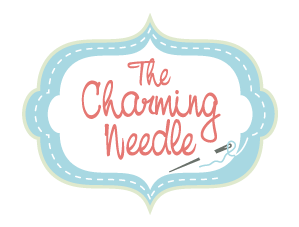I received my first order from Spoonflower last week. I’ve been wanting to try out their digital printing services for quite a while. I finally did it. My package included fabric swatches, a printed color map and a some fabric samples of my own designs!
How did I came to this? Well back in November, Agnes a friend from the Montreal Modern Quilt Guild shared the work of Libs Elliot on our Facebook page. She is a Toronto based quilt-maker. I loved her work and all the process behind her designs. She uses a programming language to generate her patterns: Processing. This programming language was specifically develop with the visual arts community in mind. The tool Libs Elliot uses was mainly developed by Joshua Davis. When I saw about his work and that he was giving a online class on Skillshare, I decided to sign-up for it. The course is Programming Graphics I: Introduction to Generative Art.
I don’t speak much on the blog about what I was doing before being a stay at home mom and making sewing/quilting projects … I have an engineering background and my last job was as a software developer in a company developing software for 3D animation. So, I was quite interested to follow Joshua David’s class. To me it felt like a great occasion to combine both interests. I wanted to learn about Processing not necessarily to make quilt patterns, but to generate patterns in general. And, maybe to help in the design of fabric prints!. When I signed-up for it, I was offered to take a Surface Design class for free (Introduction to Surface Design: Creating and Mixing Patterns). I thought it was a great complement and decided to sign-up for it as well.
I made each class project to put in application what I was learning. For the surface design class, I decided to give a theme to my project: the asterisk. I played with transparencies on one of the design and chose to integrate hand-drawn elements (lines) in another one. So the fabrics sample I ordered from Spoonflower are the result of this project.
For the generative art class, I made some pixelated arrows. I developed the code to do so. I used different shades of lime green to color the arrow pixels. The value of each pixel was chose randomly, but the pixel had more chance to be lighter as we got closer to the beginning of each arrow. Here is the result.
I was really satisfied with both classes and quite happy of what I learned. The is a bit different from the projects I usually share here. But, there is some fabric involved. You might see more from this in the future as I really enjoyed working on these projects. I hope you liked reading about it.



Hi. Maybe I could use some french here. J'ai le même background que toi, je travaille également en informatique (mais pas du tout en animation) et j'ai lu justement un article sur Processing il y a quelques semaines et je gardais ça en réserve pour mes vacances cet été. Je suis curieuse de voir de quoi ça a l'air. Et pour Spoonflower, c'est aussi sur ma liste. J'ai commandé les échantillons mais c'est tout. Je vois que tes designs sont vraiment épurés, j'aimerais réussier à arriver à ce degré de simplicité. De quoi ça a l'air une fois imprimé, est-ce que les lignes sont assez définies ? J'essaie de m'aventurer du côté "moderne" de la courtepointe, mais ce n'est pas très naturel !
Hey Sis! 🙂 I know we already talked about it when you showed me your samples, but maybe you could also put a word or two about your thoughts on the Spoonflower quality of printing and service.
I can't wait to do the processing class myself, it sounds like so much fun 😀
@Chantal Je suis la soeur de Josée et je suis en graphisme, alors la netteté des lignes c'est aussi quelque chose d'important pour moi 🙂 Je te dirais que l'impression sur tissu et sur décalque était très satisfaisant. Par contre, je ne sais pas pourquoi, mais on aurait dit que l'impression sur le papier d'emballage et le papier peint était fait à basse résolution 🙁 Il faut dire que tu regardes rarement un papier peint à 3" de ton nez, mais tout de même…
Wow! So nice to see you were inspired by my work – and you're doing a great job in the Skillshare class!
This post is very interesting. I love your results. I read the article about Elizabeth in the Toronto Star as well and found it very interesting.
wow Josee! this IS a great way to merge your 2 passions! I already saw evidence of that in your quilt designs. Your fabrics really reflect your style.
This is cool. I want to check out Processing. Those are great fabrics you designed. You've clearly got an artistic eye in addition to your technical aptitude.